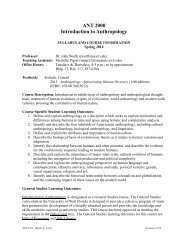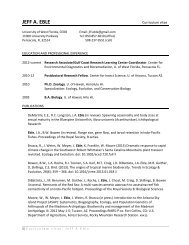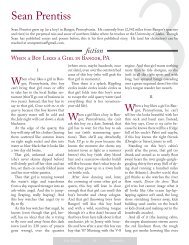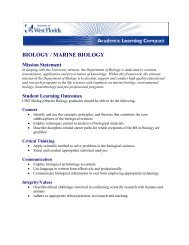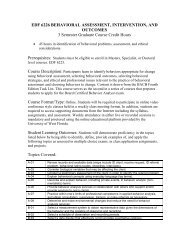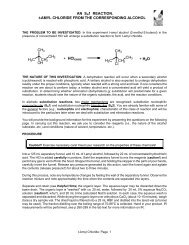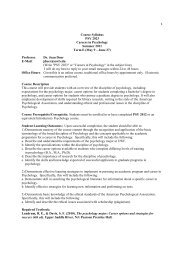1 Experiment #2: Telescopes And Microscopes Purpose: To ...
1 Experiment #2: Telescopes And Microscopes Purpose: To ...
1 Experiment #2: Telescopes And Microscopes Purpose: To ...
Create successful ePaper yourself
Turn your PDF publications into a flip-book with our unique Google optimized e-Paper software.
The focal length f of a lens is the distance along the principal axis from the center of the lens<br />
to its principal focal point. The power of a lens, measured in diopters, is the reciprocal of the<br />
focal length in meters, i.e., D 1/f.<br />
The location and size of an image may be determined by tracing rays from points on the<br />
object to corresponding points on the image. It is enough to use two rays from any point on the<br />
object to locate the position of its image. The procedure is slightly different depending on<br />
whether you are using a converging or a diverging lens—see Fig. 1(a)–(b). The object distance o<br />
is defined to be the distance from the object to the center of the lens, while the image distance i is<br />
the distance from the center of the lens to the image.<br />
From any point on the object, ray 1 is drawn parallel to the principal axis. For a converging<br />
lens, the ray is refracted by the lens and passes through the principal focal point F on the other<br />
side of the lens. For a diverging lens, the ray diverges after emerging from the lens, as if it were<br />
coming from the principal focal point F on the incident side of the lens. Ray 2 from the object<br />
point is drawn so that it passes through the center of the lens undeflected in both cases.<br />
If the two rays intersect after they emerge from the lens, the point of intersection is a real<br />
image of the object point, which means that the image may be seen on a screen placed at that<br />
point. If they are diverging after they emerge from the lens, then imagine projecting the rays<br />
backward through the lens until they intersect. This point, from which the rays seem to be<br />
emerging, is the position of the virtual image. The virtual image can be seen through the lens by<br />
an observer but cannot be captured on a screen.<br />
lens<br />
object 2<br />
F<br />
object<br />
2<br />
F<br />
F'<br />
1<br />
Fig. 1(a). Converging lens with o > f<br />
1<br />
virtual image<br />
lens<br />
Fig. 1(b). Diverging lens with o > |f|<br />
2<br />
real image<br />
F' principal<br />
axis



